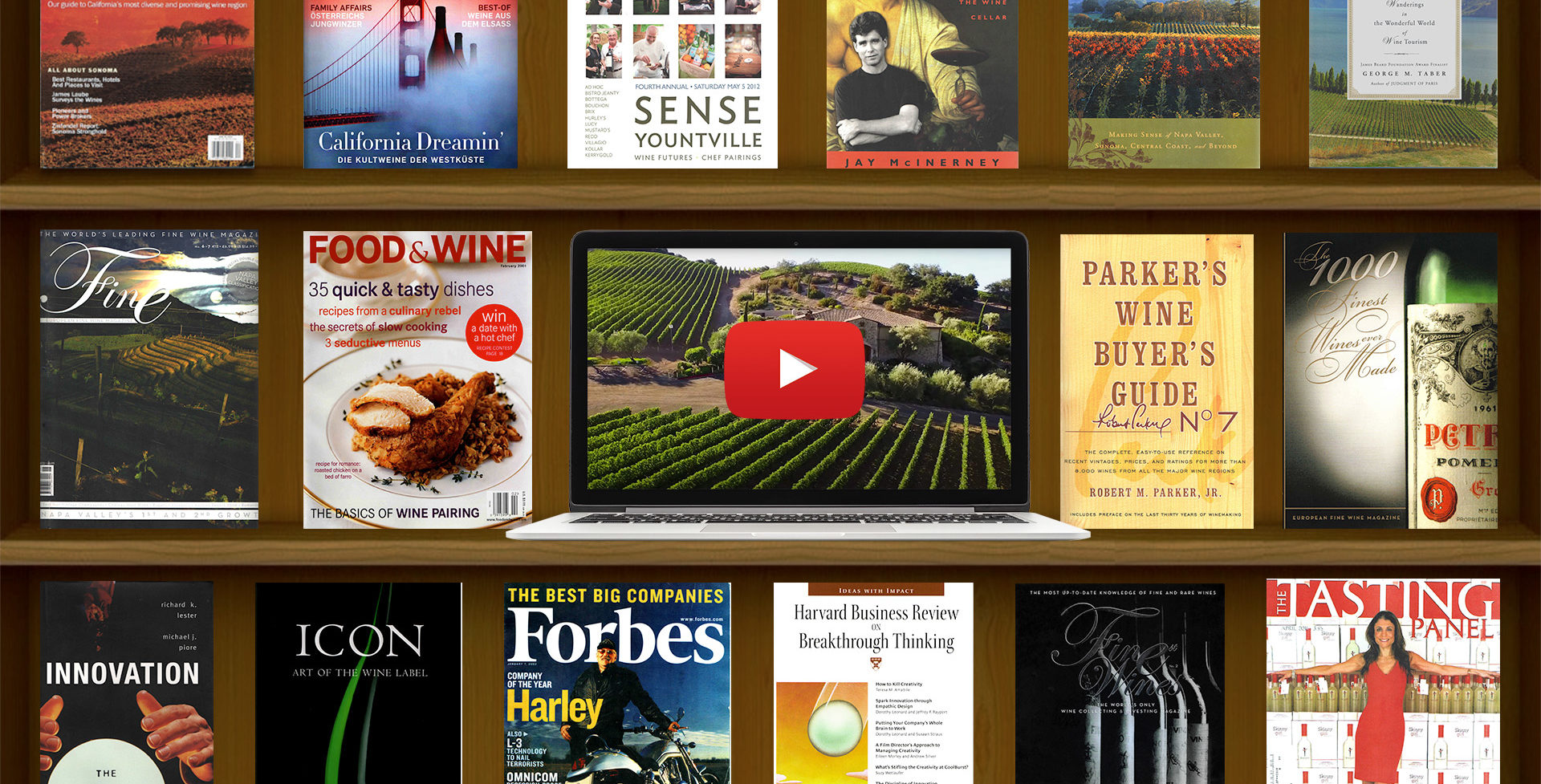AT BLANKIET ESTATE IN NAPA VALLEY, INNOVATOR CLAUDE BLANKIET TALKS DENIM AND DETERMINATION
Publicists get naturally wary when pitching clients who have distinguished themselves in one industry while positioning them in another. Some career moves have obvious relationships (drill sergeant to gym coach, for example), whereas others might appear disparate on the surface but share subtle relationships upon meditation. Deep meditation. Like, say the relationship between winemaking and acid wash jeans.
Such is the career legacy of Claude Blankiet. Once known as the man who introduced stonewashed jeans to the American market (among other techniques of artificially distressing and aging denim — from sandblasting to hand-tooling), he and his wife Katherine have enjoyed continuing success in wine since establishing Blankiet Estate in 1996. They’ve received scores of 95 points or more from such luminaries as Robert Parker, who has lauded their wine as “world-class, combining the extraordinary power of the site with an unbelievable elegance and definition.”
In other words, Blankiet has gone from faking vintage jeans to making vintage wines. On the surface, this might seem casual word play, but the notion actually bears out in Blankiet’s critically-lauded work, then and now. Essentially, he’s seeing what natural materials can do, be they textiles or 16 acres of vineyard in the western foothills of the Mayacamas mountain range overlooking Yountville in Napa Valley. The change from jeans to juice, however, did require some adjustments.
“I had to kind of slow down. I really enjoy that. All my life before this, the pace of business was always my decision,” says Blankiet, a contemplative man whose native French accent (his name is pronounced blahn-kyay) adds a certain worldly panache to his observations. “Here, we have to work with the pace of the season. Working with nature at this point in our lives is an improvement.”
For a man who had perfected the art of accelerating aging techniques in textiles, ceding control to nature and its often time-intensive processes was initially an adjustment for Blankiet.
”It’s challenging, but it’s what l like in life. I enjoy asking a question and not necessarily getting the answer that you expect,” he says wryly “From the very beginning, our idea was to satisfy personal interest and curiosity.
The idea was to plant just a small vineyard to make wine for our friends and ourselves, and perhaps sell wine to a few restaurants. The commercial aspect was not at all in the picture.”
Indeed, as one might glean from Blankiet’s wife and business partner Katherine, the winery represented something of a partial retirement. “The romantic notion of a having a simple ‘country life’ has long disappeared says Katherine with a laugh. “We’re very busy.”
Given Blankiet’s proclivity for excellence in whatever passion presently drives him, he wanted to create wine at a “high-level.” This meant conducting a three-year search for the right piece of land and sourcing the best talent available to realize his vision. “I wanted to get the best talent I could right away because I knew my limitations. I knew about wine inasmuch as I was a good consumer and a good taster, but I didn’t know how to make wine,” recalls Blankiet, whose first eight vintages were made by Helen Turley, followed by Martha McClellan-Levy for the 2006, 2007 and 2008 vintages, with assistance from world-renowned consulting enologist Michel Rolland. Since 2009, former Château Latour maître de chai Denis Malbec has served as winemaker. Moreover, acclaimed viticulturist David Abreu has overseen the development of 16 of 46 acres of vineyards, whimsically dubbed “Paradise Hills.”
Throughout the volcanic soils are planted Cabernet Sauvignon, Cabernet Franc and Petit Verdot, with Merlot taking up residence in a layer of alluvial clay left by the natural drainage of streams running from the mountain range. The combination of terroir, talent and technology (all vinification is conducted on-site using state-of-the-art equipment) results in palate-pleasing wines of expressive and complex character. (The 2007 Paradise Hills Vineyard Proprietary Red is of particular note, not least for its impressive notes of dark mocha, dark coffee, black currant and a quiet minerality).
“In my industry before, I was the link between designers and chemists. Those people usually don’t talk to each other – they use different parts of the brain,” says Blankiet. “For whatever reason, I was able to navigate those two worlds and be comfortable in either one. I can hopefully do it now between the farmers, people who work the land, and the people who make the technology which is quite innovative in America.”
Blankiet is no slouch himself when it comes to innovation. Among his accomplishments are a technique for decolorizing indigo in denim processing by means of ozone—an oxygen-based gas that he now uses to fend off mold, bacteria and fruit flies. Likewise he developed a “fingerprinting” system to authenticate fine wines and prevent fraud via “bubble tags.” Blankiet has also experimented with rosé production by using the juice bled from his 2006 harvest and fermenting it in new French barrels; the results garnered critical plaudits.
Blankiet describes himself as an “instigator” when it comes to working with his team. “I was always questioning, ‘What if? What if?’ Some winemakers like that, some do not,” he laughs. “Some winemakers and viticulturists are very enthusiastic about my approach of trying new things.”
Though Blankiet Estate has produced more wine in years past, now Blankiet prefers doing smaller case releases (often less than a thousand cases of its flagship proprietary red a year) and enjoys the support of a loyal list of wine club members.
“In spite of the stressful situations that you have sometimes because of weather or pests in the vineyard, learning to work with nature had definitely been rewarding for us,” says Blankiet.
“You have to try to have fun and believe in what you’re doing. That’s the approach we try to have here. We don’t make a lot of wine – but that’s what it takes to do it right.”


